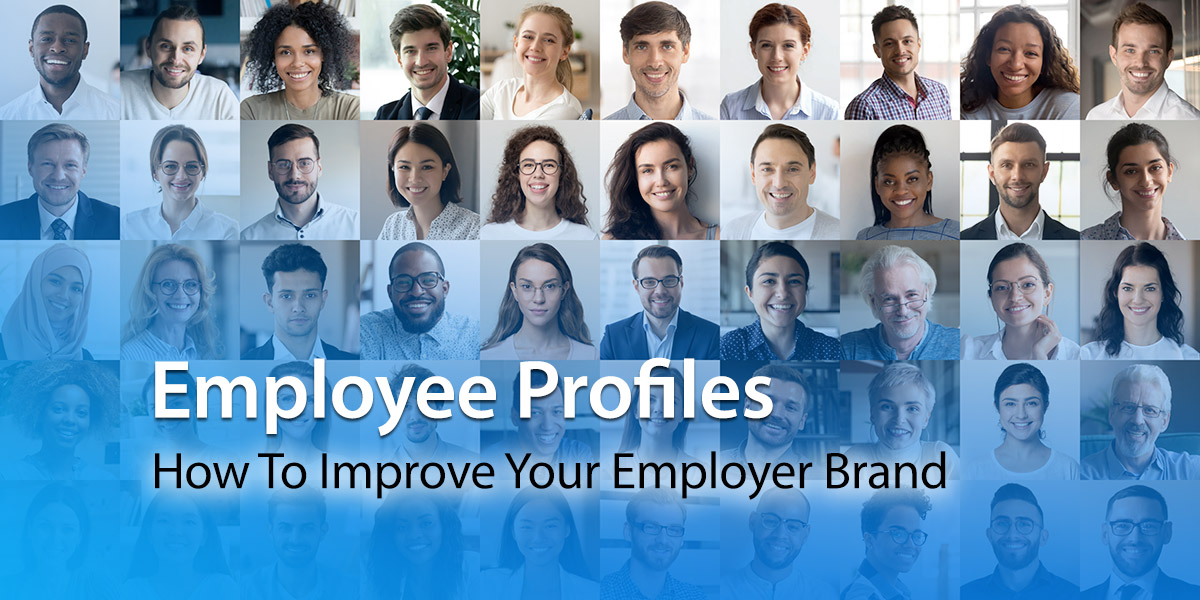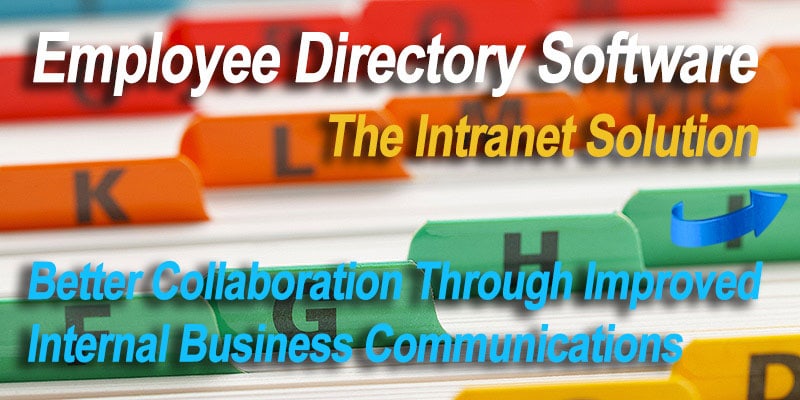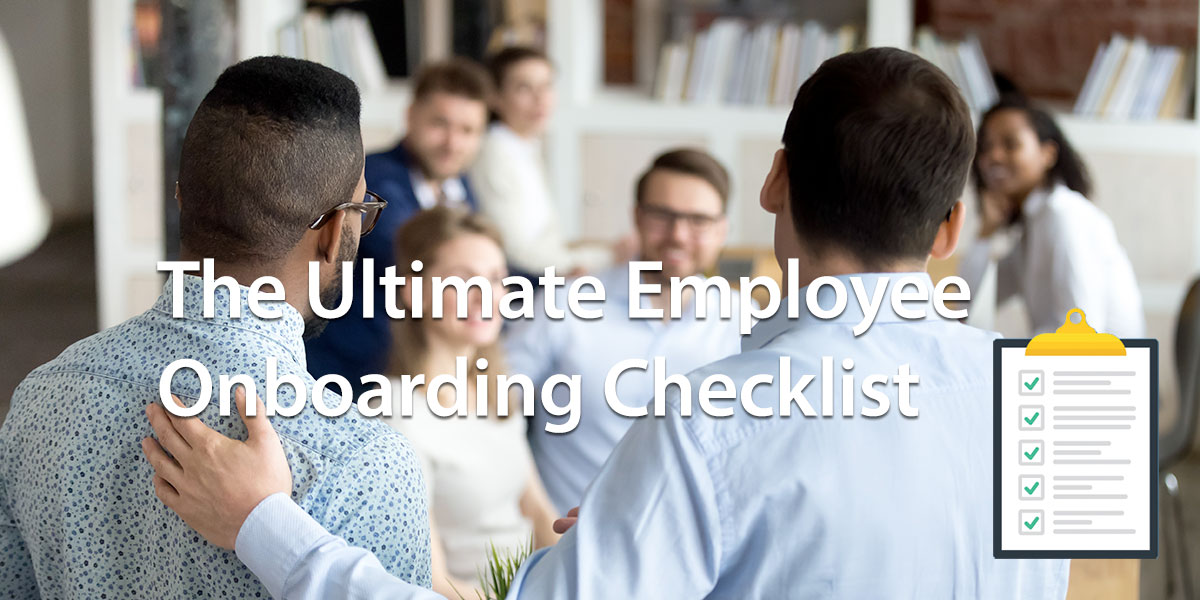The Great Resignation may no longer be hitting the news headlines. But that doesn’t mean it’s gone away. A strong employer brand can make a big difference in attracting and retaining the best talent in the marketplace. Companies with strong employer brands have no trouble with recruitment or customer retention – think Apple, Google, or Lululemon Athletica. Shining a spotlight on the team with employee profiles is one easy way to promote your employer brand.
This post takes you through all you need to know about developing compelling employee profiles.
Why Staff Directories Are Important
Employee profiles will enhance your overall employer brand. Your people are important advocates for your business and can promote your brand far beyond the office walls. Staff directories are one of the most popular features of internal websites and are critical to a positive employee experience.
However, that’s not the only benefit. Here are a host of others on offer, including the following top six benefits.
6 Business Benefits Of Employee Profiles
1. Connect With Remote Workers
Remote working was on the rise even before the pandemic. According to the data, the number of regular US remote workers increased by 216 percent between 2005 and 2019. Furthermore, the rise of the gig economy means businesses are increasingly working with freelancers and contractors. According to Forbes, two million new gig workers surfaced in 2020 in the US alone.
Keeping remote workers and freelancers connected to each other and head office is challenging. It’s next-level business communications. Simply putting a face to a name makes for a better worker experience. Employee profiles offer a sense of your co-workers’ personalities, plus work-based knowledge and expertise. The best employee profiles tell each employee’s story in a way that emails never will.
Rich employee directories connect workers and bridge the geographical divide. And they provide remote workers with a clearer view of the bigger picture.
2. Improve Working Relationships
It’s a similar story for office-based staff. Indeed, for those businesses with upwards of 50 workers, employee directories cement stronger working relationships. The old paper version just listed employees’ names and job titles. Getting a feel for that person as an individual or the depth of their expertise was impossible.
Fast forward to online staff directories, and it’s a different story. Highly visual and engaging, employee profiles bring a workforce to life, making for a more personable work environment.
3. Smarter Collaboration And Community Building
Comprehensive employee directories highlight areas of internal expertise and current projects for easier knowledge-sharing and collaboration.
Much like the social media platforms we know and love, activity walls and streams make it possible to follow colleagues whose work impacts you. Or you can follow trending #channels on topics that interest you. Thriving, dynamic communities of interest are created.
Furthermore, not all networking needs to be external. It can be difficult for your people to attend networking events and professional meetups. However, employee profiles ensure staff can network internally from the comfort of the office or home. Sharing insights, data, and good practice ideas with your network is a whole lot easier with online employee profiles. Workers can search profiles using a self-service approach through names, departments, subject tags, or trends.
4. Increase Employee Engagement
The self-service approach is very motivating and empowering for workers. It means they can use their initiative, source information, identify internal experts and achieve more for themselves. Moreover, shining a spotlight on staff with an employee profile reinforces their importance.
Self-service options and public recognition will impact positively on overall employee engagement.
5. Tool For Organizational Talent Scouting
We all know that it’s much more cost-effective to nurture the talent you already have than recruit new staff. Employee profiles give managers more oversight of the workforce. Perhaps you want to identify participants for a company-wide working group on an integrated marketing strategy. Or maybe, you are looking at future leaders for succession planning. Whatever the case, employee directories ensure management can quickly source internal talent.
6. Help Onboarding New Staff
Employee profiles make for faster, more efficient onboarding. The days of newbies having to remember names and faces are gone for good. Recruits can assimilate into the organization much faster and connect with colleagues from day one.
Employee Profile Format
OK, I get that employee profiles are a good idea, but what information should be included? It’s a good question, and the truth is there is no standard format. Each business is different. The main point here is that your employee profile software should be customizable so it’s relevant to your business.
That said, there are several essential elements all profiles should have. These include the following:
- Name
- Job role
- Photograph
- Team or department
- Office phone number
- Mobile phone number
- Email address
- Summary of main job tasks and responsibilities.
Every employee profile should have these fields as a minimum. And depending on your business, you may want to include other elements. For example, if you have multiple offices, the location would be helpful. Some companies have included complete biographies detailing the worker’s qualifications and career. Others have opted to make the profile more knowledge-based, highlighting skills, expertise, and current work projects.
It’s also worth including a personal element where employees give a sense of their personality. How about hobbies or pastimes outside work, or even fun facts. Introducing a light-hearted feature makes the profile more engaging and allows staff to showcase their individuality.
Pro Tip: Make sure employees have control of their profile. It’s part of their personal identity, and they will want to have full ownership of how they are represented.
Employee Profile Example
We have developed the following basic employee profile template to get you started. Feel free to adapt it to suit your organization’s requirements.
| PERSONAL DETAILS | |
| Name: | |
| Cell phone: | |
| Office phone: | |
| Email: | |
| Location: | |
| CURRENT ROLE | |
| Job title: | |
| Team: | |
| Department: | |
| Manager’s name: | |
| Direct reports: | |
| CAREER ACCOMPLISHMENTS
(brief summary of career to date & key accomplishments) |
|
| KNOWLEDGE & EXPERTISE
(list up to five areas of expertise & knowledge e.g. workplace safety & health, procurement, social media marketing) |
|
| CURRENT WORK PROJECTS & ACTIVITY STREAMS
(list main job tasks & responsibilities, identify any special projects or collaborative initiatives) |
|
| PERSONAL STATEMENT
(short statement of your hobbies, interests & pastimes outside work) |
|
Employee profiles should also include a photo. Some companies have gone further and include video testimonials with staff chatting about their roles, knowledge, and expertise.
And like any social media platform, image-based content in the shape of photos and videos is far more popular than text. Images bring the employee’s profile to life for a more engaging and rewarding user experience. These don’t need to be professional images either. Nowadays, everyone can access high-quality videos and cameras using their smartphones, which can be easily uploaded.
How To Write Your Employee Profile
Now we come to the hard part! How do you write a good employee profile? Not everyone feels comfortable talking about themselves, and getting started is hard. If you want employees to buy into the process, you need to make it as easy as possible.
Consider publishing guidelines on how to write an employee profile. You could pose the following questions to get workers thinking about the kind of information to include:
- What does your job involve?
- What’s a typical day for you?
- What do you like most about your work?
- Are there any frequently asked questions from colleagues or customers?
- How do you spend your time away from the office?
- Do you have any exciting hobbies or pastimes?
- Is there a fun fact you can share with colleagues?
When it comes to sitting down and writing a profile, here are some valuable tips to include in your guidelines. What’s more, leading by example is critical. Make sure you use these tips when completing your own profile:
- Keep it short and sweet: The best employee profiles are concise and to the point. You are not applying for the job or justifying your corporate existence. So, there’s no need to write pages and pages of content. Instead, keep it at the headline level.
- Put yourself in a colleague’s shoes: Imagine you are a co-worker in another team or a new staff member. How would you answer if they asked you what your job is all about? This kind of information is what you need to get across in your employee profile. Ask yourself whether the information you are sharing adds value to your co-workers.
- Use a conversational tone: Try and use everyday language and terms that most people will understand. An acronym used in your department may not be understood by colleagues in other parts of the organization. Plus, rather than using stuffy, corporate language, a conversational tone makes you come across as approachable and relatable.
- Be specific: Saying things like ‘good at MS Word’ isn’t helpful to Martha in Marketing, who is looking for help with advanced mail merge. Be specific about your expertise and include real-life work examples to illustrate your skills.
- Make it easy for the reader: Break down the copy into easily digestible, bite-sized chunks. That way, you won’t be overloading the reader with too much detail. A couple of sentences for each key point is more than enough. And just like we have done, use bullet points and bold headings to signpost what’s coming and guide the reader.
- Regularly review and update your profile: A stagnant, unchanging employee profile is counterproductive. Every time you embark on a new initiative or complete a project, update your profile, so it’s fresh and current.
How To Get Employees To Complete Their Profiles
Let’s face it, even with a template and helpful guidelines, some employees will be reluctant to get on board. They may lack confidence or feel uncomfortable blowing their own trumpets. Some will be under pressure and don’t have the time or see the point of employee profiles.
Here are some ways to encourage staff to get involved:
- Lead by example: Senior managers and leaders need to stand up and be counted. It’s tough to reprimand employees for not completing their profiles if executives haven’t set the right example.
- Make sure your people understand the importance of employee profiles: Often, the root cause of an employee’s failure to get on board isn’t apathy. It’s a lack of understanding about why it’s crucial. Use the benefits we identified at the beginning to communicate what you are trying to achieve. Make it clear how it will help employees in their daily work.
- Address employees’ concerns head-on. Workers are bound to have questions. They may be concerned about their privacy and how the company will use the information. Not all employees will be willing to share their profiles with the world on the company website. However, they may be more comfortable sharing within a secure, internal network. Be honest and open with staff, and make sure you address these valid concerns.
- Offer help and advice: All workers need to be on board to be effective. There’s nothing worse than clicking on someone’s profile only to find it’s empty. Ensure your people have the time and space to complete their entry. And offer practical help and support if needed.
- Set up a competition: Sometimes, turning it into a competition can kickstart the process. Why not offer a paid day off or team lunch for the department that gets all their profiles completed? A bit of friendly rivalry often makes the difference.
- Make it a requirement: If all else fails, making it a condition usually encourages any employees who might have dragged their feet to just get on with it.
Intranet Employee Profiles
So, you’re sold on the usefulness of employee profiles, and you’re keen to get started, but you don’t know what software to use?
Well, the MyHub intranet could well be the perfect solution. Employee profiles are included as a standard feature. They are also fully customizable. You can add or delete fields relevant to your business using an intuitive setup wizard. You can even take it further by including other social intranet features. Take your pick from individual or site activity walls and follows.
However, employee profiles are just one tool in a comprehensive intranet solution that ticks several boxes. How about the following great features for a cost-effective total solution:
- Secure hosting environment
- Content and document management system
- Company and team newsfeeds
- Real-time collaboration with intranet-embedded Google Workspace or MS Office 365 apps
- Quizzes and surveys
- Corporate calendars
- Online forms and workflows.
These great features are available in a single integrated platform requiring just one sign-on. The cost-effective monthly fee includes backups, updates, online security, and ongoing support. An intranet solution really is hard to beat.
Interested in finding out more? Get in touch today and explore the possibilities with a free demo or a no-obligation 14-day trial.












0 Comments